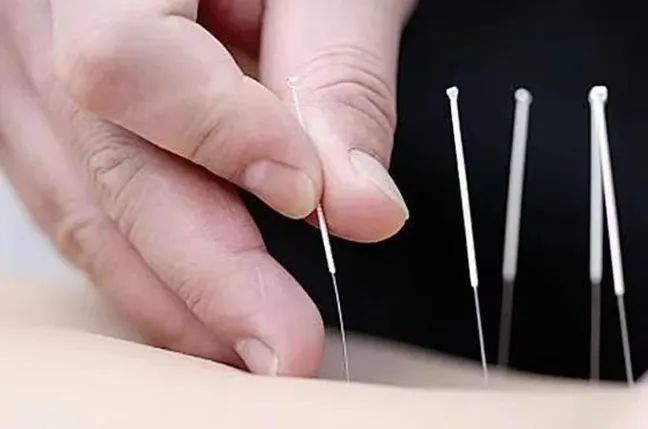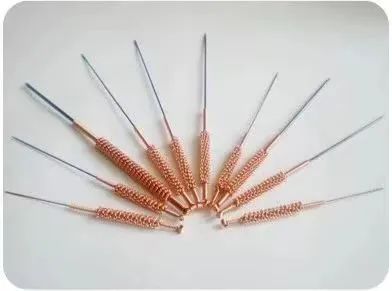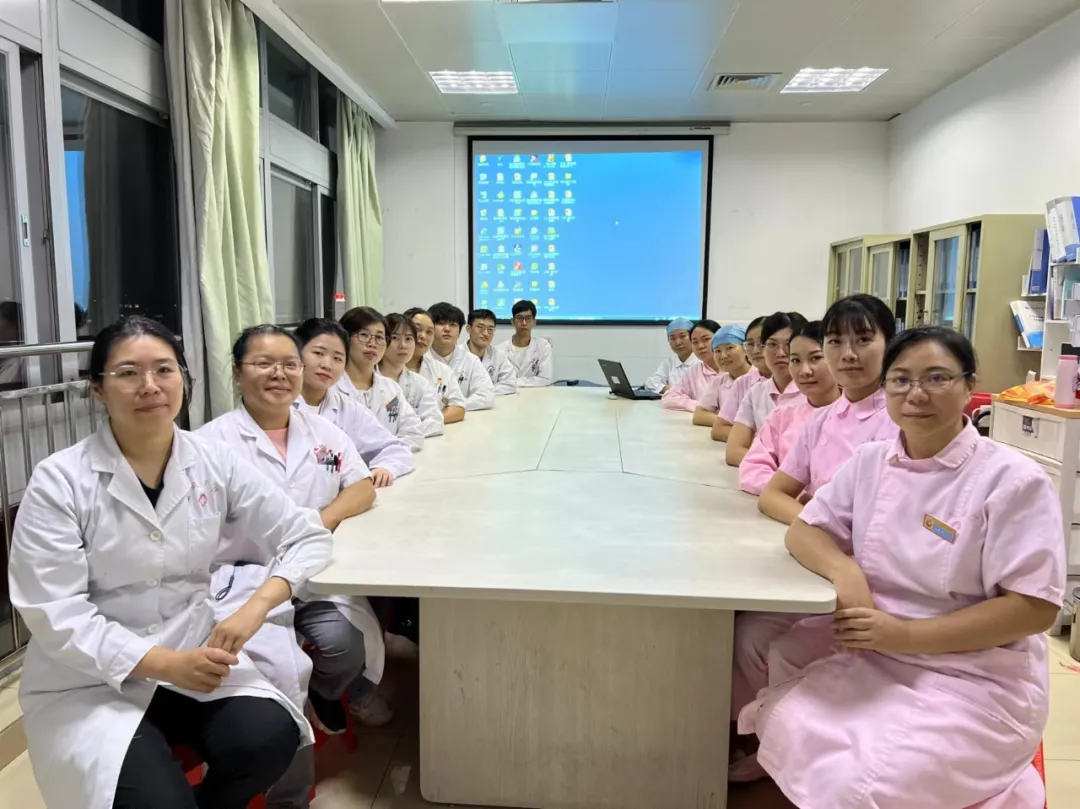In clinical practice, many people are startled by the name “fire needle”; with fire and needles involved, it sounds quite terrifying. But there’s no need to be afraid! Today, I will introduce what fire needle therapy is.

As the name suggests, fire needle therapy involves heating a needle until it is red-hot and then using it for treatment. Yes, that’s right! Fire needle therapy uses a heated needle to quickly pierce acupuncture points (腧穴, shùxué) or areas of skin lesions to treat diseases. It combines the characteristics of both acupuncture and fire, stimulating the flow of qi (气) while also using heat to warm the meridians (经络, jīngluò), dispel evil, and promote circulation. This method has a special therapeutic effect on various stubborn diseases and is a “simple, convenient, effective, and economical” acupuncture technique.

– Historical and Modern Perspectives on Fire Needle Therapy –

Ancient texts have long recorded the use of fire needles. For instance, in the “Ling Shu (灵枢) – Guanzhen (官针)” it states: “For those who are treated with fire needles, it is to relieve obstruction.” The “Shang Han Lun (伤寒论)” also discusses the indications and contraindications for fire needle therapy.
In the “Qian Jin Yi Fang (千金翼方)”, it mentions: “For treating boils and abscesses, the needle must be extremely hot.” The “Zhen Jiu Da Cheng (针灸大成)” summarizes the experiences of using fire needles for treatment before the Ming Dynasty, which can be referenced. Modern research has found that the temperature of a fire needle can reach up to 700 degrees Celsius. The high temperature of the fire needle directly reaches the affected area, carbonizing the surrounding scar tissue and relieving adhesions, thereby improving local blood circulation and providing analgesic, anti-inflammatory, and anti-swelling effects.


– Conditions Treated by Fire Needle Therapy –

1. Chronic pain from muscle strain and other tendon-related diseases. This includes conditions caused by prolonged overuse or repeated micro-injuries, such as cervical spondylosis (颈椎病, jǐngzhuī bìng), shoulder periarthritis (肩周炎, jiānzhōu yán), lumbar muscle strain (腰肌劳损, yāojī láosǔn), degenerative changes in the knee joint (膝关节退行性变, xī guānjié tuìxíng xìng biàn), and ganglion cysts (腱鞘囊肿, jiànqiào nángzhǒng).2. Herpes zoster and postherpetic neuralgia. Herpes zoster falls under the category of snake string sores in TCM, often due to insufficient righteous qi (正气, zhèngqì) and internal damp-heat toxins. Fire needle therapy can help expel the evil and promote local qi and blood circulation, aiding in the healing of the rash and alleviating pain.3. Spastic hemiplegia after stroke. During the recovery phase of a stroke, increased muscle tone and stiffness occur, referred to in TCM as “yang is slow while yin is rapid.” Fire needle therapy can help balance yin and yang locally, reduce muscle tone, and relieve stiffness.4. Gouty arthritis. This condition is characterized by joint swelling, heat, redness, and pain. Fire needle therapy can quickly relieve pain and swelling by using heat to draw out heat. It should be combined with a proper diet and avoidance of alcohol to prevent recurrence.5. Other skin diseases. Fire needle therapy is primarily used to treat acne (痤疮, cuóchuāng), chronic eczema (慢性湿疹, mànxìng shīzhěn), and neurodermatitis (神经性皮炎, shénjīng xìng píyán), promoting blood circulation, clearing heat and detoxifying, and relieving itching. It can also improve skin metabolism and enhance the skin’s barrier function.Fire needle therapy for ganglion cysts.

– Precautions –

(1) Ensure adequate psychological preparation before the procedure, avoiding treatment when overly hungry, full, cold, or tense.(2) Fire needle stimulation is intense; it is contraindicated for pregnant women and the elderly or weak individuals.(3) Use fire needle therapy cautiously in individuals with scar constitution. It is contraindicated in acute hypertension, heart disease, and malignant tumors.(4) Avoid scratching the needle site. If there is redness, itching, or discharge, local disinfection can be done with 75% alcohol or iodine, and burn ointment can be applied.
Note: Clinical procedures carry risks, and all operations must be performed by qualified medical professionals.


– TCM Rehabilitation Department –

The TCM Rehabilitation Department of Dongfeng People’s Hospital in Zhongshan integrates TCM, Western medicine, and education, including specialties such as TCM internal medicine, orthopedic injuries, acupuncture, tuina (推拿, tuīná), TCM rehabilitation, and preventive medicine. It has outpatient and inpatient departments. Currently, there are 18 professional staff members, including 5 attending physicians, 2 resident physicians, 1 deputy chief nurse, 2 charge nurses, 1 rehabilitation supervisor, and 4 rehabilitation technicians; among them, there are 2 master’s degree holders and 14 bachelor’s degree holders.

The department is well-equipped, with facilities including a medication room, acupuncture room, tuina room, moxibustion room, Chinese medicine fumigation room, traction room, physiotherapy room, exercise therapy room, and occupational therapy room.
The treatment scope includes:Neurological diseases: sequelae of stroke, nerve injuries, sequelae of cranial injuries, dizziness, facial paralysis, etc.Orthopedic joint pain: cervical spondylosis, shoulder periarthritis, lumbar disc herniation, sciatica, arthritis, joint sprains, myofascial pain, headaches, tennis elbow, carpal tunnel syndrome, scoliosis, etc.Internal medicine diseases: insomnia, deafness, tinnitus, hiccups, gastrointestinal diseases, respiratory diseases.Pediatric diseases: torticollis, developmental delays, cerebral palsy, and pediatric constitution adjustment.Gynecological diseases: dysmenorrhea, irregular menstruation, postpartum conditions, etc.Dermatological diseases: herpes zoster, chronic eczema, acne, etc.Guidelines for visiting the TCM Rehabilitation Department:Outpatient department: 3rd floor of the outpatient buildingInpatient department: 6th floor of the inpatient building, comprehensive departmentContact number: 0760-2259 5337
Source: Liu Lingjie (TCM Rehabilitation Department)
Editor: Huang Jie
First review: Pan Xuehua
Second review: Wang Yongdong
Third review: Xiong Chunlin
(Some images and text sourced from the internet; please contact for removal if there is any infringement.)

